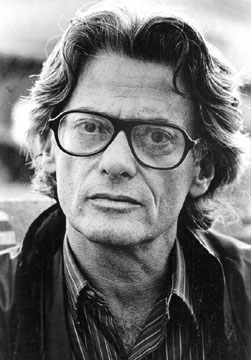Richard Avedon
1923-2004
Inductee Sponsor: Kurt Jafay
About
American fashion and portrait photographer, Richard Avedon, was known for breaking the photography boundaries in the fashion and political world. Ranging from work found in Vogue to the New Yorker, Avedon was able to capture the rare emotion and a unique essence of his subjects that many other photographers failed to do.

Born and raised in New York City by a family involved in the fashion world, Avedon took an interest in fashion and photography from an early age. He attended DeWitt Clinton High School where he managed the school’s literary magazine, The Magpie, with fellow classmate and long time friend, James Baldwin. Avedon enrolled in Columbia University, but dropped out after one year to serve in the Merchant Marines during World War II. As a Marine, his primary duty was to photograph sailors for identification portraits. After fulfilling his military duties, Avedon attended the New School of Social Research to study under Harper’s Bazaar’s art director, Alexey Brodovitch in1944. The photographers quickly developed a close relationship and after one year of working together, Brodovitch hired him as staff photographer for the magazine. After a few years of photographing daily life in New York, Avedon was given the assignment of covering the notorious fashion week in Paris. Throughout the next ten years, he photographed the models out and about in the city of Paris, posing in places like cafes and streetcars. Avedon worked at Harper’s Bazaar for twenty years, and left to work for another notable fashion magazine, Vogue, where he remained for almost twenty-five years.
In addition to his work in the fashion world, Avedon was a master in portraiture and worked in political photography as well. He photographed countless icons such as Dr. Martin Luther King, Jr., Marilyn Monroe, the Beatles, and President Eisenhower. In addition to working in fashion and portraits, Avedon published over a dozen books including two of his most famous works, Observations and Nothing Personal, which contain collections of his photographs with commentary and essays from noteworthy colleagues. After finishing his career at Vogue in 1990, Avedon became the first staff photographer of the New Yorker where he aspired to “photograph people of accomplishment, not celebrity, and help define the difference once again”. Avedon died on October 4, 2004 while on assignment for the New Yorker. Avedon had been married and divorced twice and is survived by his son, John, and four grandchildren.
Richard Avedon’s controversial and provocative pictures challenged the traditional photography of his time, and helped turn photography into an expressive art form. One of his most iconic pieces is entitled “Dovima with Elephants”, which includes the model wearing an elegant Dior gown while posing with two elephants at a circus. His portraits were highly renowned for not only his unique black and white style, but also his ability to capture raw, intimate emotion while still maintaining a sense of formality. His photographic ability was extremely versatile as he worked in the political field and medical field, in addition to his fashion and portrait work. He photographed civil rights activists and Vietnam soldiers and also created a collection of portraits of his terminally ill father that appeared in Museum of Modern Art in 1974, and later in the Marlborough Gallery. A collection of his work over the span of his career titled “Richard Avedon: Photographs 1947-1977”, was presented at the Metropolitan Museum of Art before traveling to different museums all over the world. He has received countless awards for his work including The Royal Photographic Society’s Special 150th Anniversary Medal and Honorary Fellowship in 2003, and was named one of the top ten greatest photographers in the world by Popular Photography magazine. In addition to his collections and honors, Avedon left behind a commendable legacy in the Richard Avedon Foundation. The foundation, created by Avedon and maintained by his surviving family, serves as a kind of archive of all of his work and “encourages the study and appreciation of Avedon’s photography through publications, touring exhibitions, and outreach to the academic community”. Avedon also inspired the 1957 film, Funny Face, in which the main character is based on his own life.
Richard Avedon was passionate about photography and devoted his life to capturing the reality of his subjects. He is one of the most famous photographers of all time because of his groundbreaking photographic techniques and push towards turning photography into more than just pictures by expanding the fashion world and turning the photography genre into a unique art form.
By Kyerstin Hill, Marquette University, for IPHF
